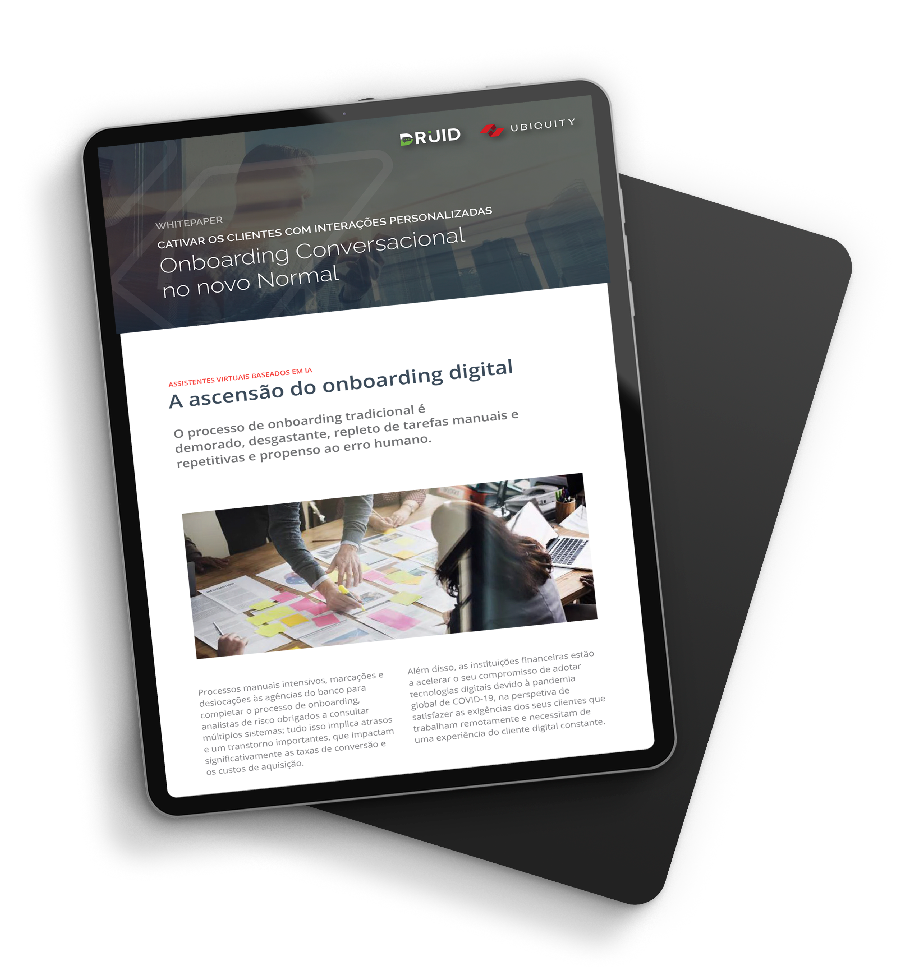The rise of digital onboarding
The traditional onboarding process is time-consuming, stressful, full of manual and repetitive tasks and susceptible to human error.

Intensive manual processes, appointments and trips to bank offices to complete the onboarding process, risk analysts forced to consult multiple systems; all this entails severe delays and inconvenience, which significantly impact conversion rates and acquisition costs. In addition, financial institutions are accelerating their commitment to digital technologies due to the global pandemic of COVID-19, in order to meet the demands of their customers who work remotely and require a constant digital customer experience.
Customer behaviour is evolving, and digital-oriented customers want simpler and faster interactions.
The rise of digital onboarding
According to a recent study conducted by McKinsey in 2020 with a sample of more than 20 000 European consumers, the adoption of digital processes has increased in Europe from 81% to 95% due to COVID-19. This increase is not yet reflected in the digital onboarding process.
PwC conducted a study in which “76% of respondents said that the entire onboarding process could be completed online”. For its part, Deloitte emphasised in its “Bank Maturity 2020” report that “34% of banks have implemented fully digital processes”.
Still, consumers have no interest in the intrinsic complexity of the IT solution, and only evaluate it based on the actual customer experience that financial institutions provide on their mobile devices.
For example, although certain banks offer the possibility to start the application online, the user will still be forced to go through several steps of separate processes to open a simple bank account and will still end up talking to an employee.
According to the “Next-Generation Client Onboarding” study conducted by PwC, 70% of respondents consider providing a positive customer experience to be the biggest challenge of the onboarding process.
Read the full article here:
Want to know more? Download the e-book we prepared for you.







